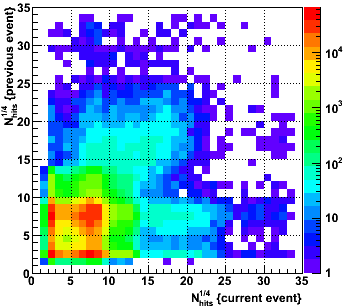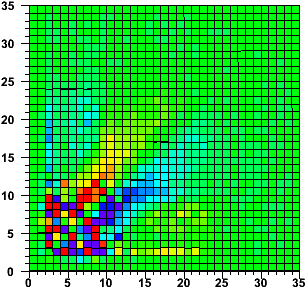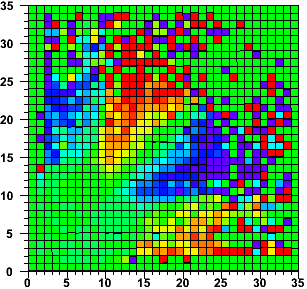- genevb's home page
- Posts
- 2025
- 2024
- 2023
- 2022
- September (1)
- 2021
- 2020
- 2019
- December (1)
- October (4)
- September (2)
- August (6)
- July (1)
- June (2)
- May (4)
- April (2)
- March (3)
- February (3)
- 2018
- 2017
- December (1)
- October (3)
- September (1)
- August (1)
- July (2)
- June (2)
- April (2)
- March (2)
- February (1)
- 2016
- November (2)
- September (1)
- August (2)
- July (1)
- June (2)
- May (2)
- April (1)
- March (5)
- February (2)
- January (1)
- 2015
- December (1)
- October (1)
- September (2)
- June (1)
- May (2)
- April (2)
- March (3)
- February (1)
- January (3)
- 2014
- December (2)
- October (2)
- September (2)
- August (3)
- July (2)
- June (2)
- May (2)
- April (9)
- March (2)
- February (2)
- January (1)
- 2013
- December (5)
- October (3)
- September (3)
- August (1)
- July (1)
- May (4)
- April (4)
- March (7)
- February (1)
- January (2)
- 2012
- December (2)
- November (6)
- October (2)
- September (3)
- August (7)
- July (2)
- June (1)
- May (3)
- April (1)
- March (2)
- February (1)
- 2011
- November (1)
- October (1)
- September (4)
- August (2)
- July (4)
- June (3)
- May (4)
- April (9)
- March (5)
- February (6)
- January (3)
- 2010
- December (3)
- November (6)
- October (3)
- September (1)
- August (5)
- July (1)
- June (4)
- May (1)
- April (2)
- March (2)
- February (4)
- January (2)
- 2009
- November (1)
- October (2)
- September (6)
- August (4)
- July (4)
- June (3)
- May (5)
- April (5)
- March (3)
- February (1)
- 2008
- 2005
- October (1)
- My blog
- Post new blog entry
- All blogs
Sequential excessively large TPC events
While doing the studies for Limiting production of events with large hit counts, Victor & I noticed that events with excessively large numbers of TPC hits during Run 10 AuAu7 seemed to be immediately followed by additional events with reduced, but still large number of TPC hits. Here is a simple example for the TPC hit multiplicity in the first 20 events of st_physics_11130004_raw_2010001.daq:
5088 7520 3125 1391 422 3846 2190 768075 179445 162291 11197 9864 2084 3280 10137 8149 8169 3568 12467 13731
To demonstrate this systematically, I plotted Nhits1/4 from the previous event versus the current event:

There is certainly some asymmetry to this plot, which should not exist if each event is random (just as probably that the previous and current events have a large number of TPC hits). To see it a little more obviously, I plotted the difference between (previous vs. current) - (current vs. previous) [left plot], and then that same difference normalized by the sum [right plot, histogram range set to ±1]:


These plots demonstrate that there are three notable locations of excess:
- Previous event had Nhits1/4 = [10,25], and current event had Nhits1/4 = [5,20]
- Previous event had Nhits1/4 = [2,3], and current event had Nhits1/4 = [10,25]
- Previous event had Nhits1/4 = [5,10], and current event had Nhits1/4 = [15,25]
The deficits are reflections of the excesses, and the normalized version of the plot helps demonstrate how far out these excesses extend (the relative excess gets larger at higher hit multiplicity, but the actual excess is largest at intermediate hit multiplicity).
I believe these three excesses are the same issue: the bulk of events have either Nhits1/4 = [2,3] or [5,10]. Along comes an excessively large event with Nhits1/4 = [10,25], creating the excesses (ii) and (iii). These events are then immediately followed by the events with slightly lower, but still high hit multiplicity of Nhits1/4 = [5,20].
It is worth noting that these "previous" events are not necessarily the previous event recorded. These are sequential within a file, but events are being recorded to several file streams concurrently. I imagine an even stronger correlation could be expressed using truly sequential events in time.
Summarizing, it appears that we probably see a large initial spike of event-wise hit multiplicity, followed by a rapid decay (over several events). The hit multiplicity does not have a symmetric rise and fall, but instead has a sharp leading rise. Perhaps it is a sudden change in some beam tuning influence (a RHIC magnet somewhere), causing the beam to scrape the beampipe upstream of STAR as we suspect, which then relatively slowly returns to its nominal operation.
-Gene
- genevb's blog
- Login or register to post comments
